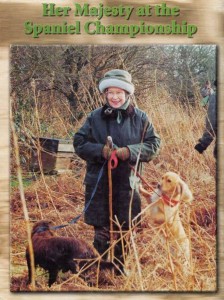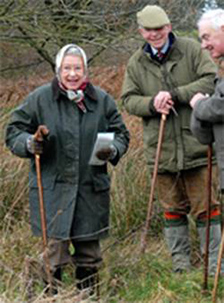THE COCKER: Little Dog -Big Heart!
( published in Spaniels In The Field – Spring 2001)
I am always delighted to read about the increasing interest in the English Cocker in America. Like its counterparts in this country, the breed looks to be going from strength to strength. Little wonder, for the more the breed is seen doing its thing in the field, the more people are astounded by the work rate and sheer potential of this power packed little dynamo, and the more converts the breed picks up.
 It would be wrong to make direct comparisons between springers and cockers for they each have strengths and weaknesses unique to their respective breeds. On the face of it they do the same job, yet they each have a different slant on it. There are big cockers, and there are small springers, but regardless of size their styles of hunting are markedly different.
It would be wrong to make direct comparisons between springers and cockers for they each have strengths and weaknesses unique to their respective breeds. On the face of it they do the same job, yet they each have a different slant on it. There are big cockers, and there are small springers, but regardless of size their styles of hunting are markedly different.
Temperamentally they are different too. Cockers have a well-earned reputation for being independent. Their performance is often thought to be less consistent than that of the springer too. This may be because they tend to be more `pace-sensitive’ to differing scenting conditions. Consequently, they take a more considered response rather than ploughing on regardless as the ever optimistic springer is apt to do. As a roughshooter, I don’t find this a problem.
One thing that is for sure is that the cocker isn’t simply a smaller version of the springer. The cocker thinks differently, acts differently and goes about its business differently. It has a reputation for being naughty. But I find life gets much easier once you regard this endearing little trait as being down to tenacity, single-mindedness and resourcefulness. There again, I have been well and truly smitten by the wee things!
Although I have handled far more springers than I have cockers, cockers suit the country that I now hunt and they suit me fine. I like their style, their quirky nature and their indomitable spirit. Their independence of nature and readiness to take the initiative regularly leaves me seething. Yet all too often such cavalier individualism ends in a breathtaking piece of game finding. Maybe I’ve hung around with them too long, but I can’t help thinking that this is one breed that definitely punches above its weight.
One only has to read the exploits of writers like your very own Barbara Haupt to see the potential of the cocker. Her dogs are expected to do more than many during the course of a season, both on land and when shooting over water, and in some of the toughest cover imaginable. My own shooting dog, Smudge, is another example of the versatility of the breed.
She is nearly seven years old now and I have shot over a thousand head of game over her to my own gun. Her stamina appears bottomless, and she regularly hunts for up to three hours at a time without a break. Yet she maintains good pace and never stops trying.
Not surprisingly, her game and gun sense are phenomenal, to the extent that she makes it all look deceptively easy. Her marking is spot on, as is her capacity for lining a rabbit, and together with her superb gun sense more than compensate for her attitude towards handling on a blind retrieve. She will handle, and handle well when she has a mind to, but tends to want to try it her way before pandering to mine!
Where she really does shine is in the taking of a cripple. Once she hits the fall or cuts the line, then the retrieve is hers, no matter how far it might have run or whatever lengths it takes to evade capture. Apart from the occasional diving duck or rabbit that goes to ground, she has never failed on a cripple. Her finds are positive and her mouth is good. She does eat the occasional snipe. But hey, she is a cocker!
High points from last season? The first, a hare that she found after a clever bit of hunting. Lung-shot, it ran on nearly three hundred yards before stopping. She hit the shot scent, quickly switched to the blood line and took it at speed to pick the hare cleanly, cantering back without putting it down once.
The second instance was on a stormy evening when I was flighting duck. A skein of greylag geese came directly over me and I killed one that dropped far out in the field. Easy to find, but an awkward retrieve for a small dog. Yet not a problem, for she carried it right back to hand despite the occasional trip when she stood on a trailing wing. These dogs aren’t mere novelties. They’re serious hunting machines.
Smudge weighs in at thirty pounds, but what I really wanted to try was a pocket-sized dog around the twenty-five pound mark. Early last year I brought in two litter sisters from a top Scottish kennel and am delighted to see that they will probably make around twenty-six pounds.
They are a year old now and full of potential. The lemon roan is big boned and cobby, with the softest of temperaments and a natural retrieve. The liver bitch is slight yet powerfully muscled. She has fire in her belly, and it is many years since I have had a pup with such raw natural ability.
Over the last few years I have been researching methods of training based on `positive reinforcement’. By way of experiment, I decided to attempt to train the two pups using positive reinforcement methods only. So far, the results have been encouraging, but it has been a steep learning curve for nobody over here appears to be using these methods.
I understand that some trainers in the States have been using them for quite a while with good results. Should anyone like to compare notes, I would be only too pleased to hear from them.



